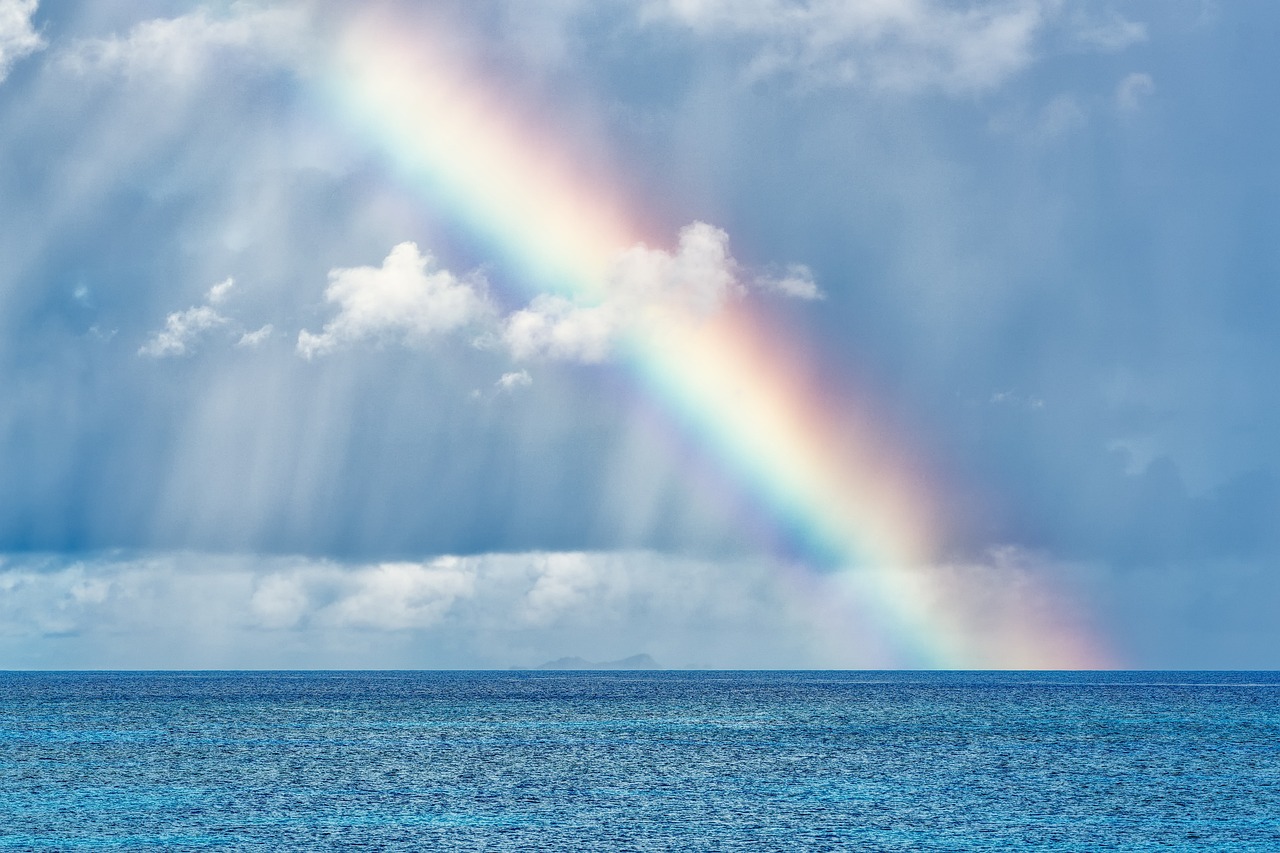- A rainbow is a meteorological phenomenon caused by reflection, refraction, and dispersion of light (usually sunlight) in water droplets, resulting in a spectrum of light appearing in the sky.
- Rainbows typically appear as a circular arc with its end appearing to touch the Earth, but from an aerial perspective, rainbows are actually full circles.
- A rainbow spans a continuous spectrum of colors. Traditionally, however, they are depicted as seven segments of color: red, orange, yellow, green, blue, indigo, and violet.
- You can only see a rainbow if the Sun is behind you and the rain in front.
- The term “rainbow” comes from the Latin word “arcus pluvius,” which means “rainy arch.”
- Rainbows typically appear when sunlight breaks up into its component colors after being refracted, or bent, by raindrops.
- A double rainbow happens when light is reflected twice within the raindrop. The second (outer) rainbow has its colors reversed compared to the primary (inner) rainbow.
- Alexander’s band is the dark area of the sky between a double rainbow.
- The angle of sunlight determines the height of a rainbow. A lower angle (like in the early morning or late afternoon) results in a higher rainbow.
- Rainbows can also form around other types of water droplets, like mist or spray, leading to phenomena like fogbows and waterfall rainbows.
- A moonbow, or lunar rainbow, is caused by the reflection, refraction, and dispersion of light, typically moonlight instead of sunlight.
- A red rainbow occurs when the sun is low in the sky, such as at sunrise or sunset, and the shorter wavelengths of light (such as blue and green) are scattered out, leaving mostly red light to create the rainbow.
- In Greek mythology, the rainbow was considered to be a path made by a messenger (Iris) between Earth and Heaven.
- In Norse mythology, a rainbow called the Bifrost connected the realms of Asgard and Midgard, homes of the gods and humans, respectively.
- The world record for the longest-lasting rainbow is reportedly 8 hours, observed in Taiwan in 2017.
- Rainbows can be used in weather forecasting. A morning rainbow in the west means that rain is on its way, while an evening rainbow in the east means rain is departing.
- A supernumerary rainbow is a fainter, secondary rainbow that occurs on the inner side of the primary rainbow, with several lightly colored, repeated rings.
- A circumhorizontal arc, often called a “fire rainbow,” appears parallel to the horizon. It’s caused by the refraction of sunlight in plate-shaped ice crystals in cirrus clouds.
- Sun showers, when rain falls while the sun is shining, often lead to the most vibrant and beautiful rainbows.
- The idea of finding a pot of gold at the end of a rainbow comes from Irish mythology, particularly tales of leprechauns.
Facebook Comments


































